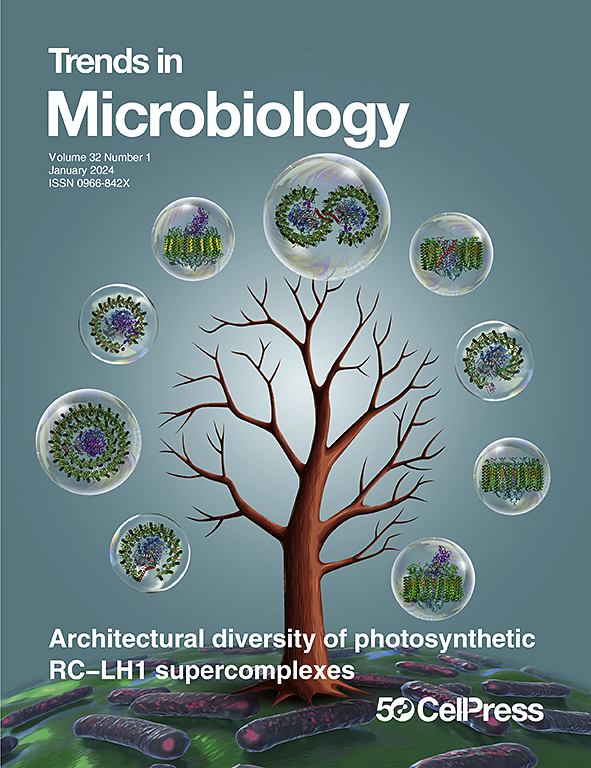细菌免疫中的超分子组装:一种新兴范式。
IF 14
1区 生物学
Q1 BIOCHEMISTRY & MOLECULAR BIOLOGY
引用次数: 0
摘要
最近,对细菌免疫系统的研究势头强劲,揭示了一个引人入胜的趋势:许多系统形成了大型超分子组装体。在这里,我们将探讨这些结构在进化过程中取得成功的潜在机制,并将其与真核生物的免疫系统进行比较,同时提出新的观点,以促进未来对细菌免疫系统的研究。本文章由计算机程序翻译,如有差异,请以英文原文为准。
Supramolecular assemblies in bacterial immunity: an emerging paradigm.
The study of bacterial immune systems has recently gained momentum, revealing a fascinating trend: many systems form large supramolecular assemblies. Here, we examine the potential mechanisms underpinning the evolutionary success of these structures, draw parallels to eukaryotic immunity, and offer fresh perspectives to stimulate future research into bacterial immunity.
求助全文
通过发布文献求助,成功后即可免费获取论文全文。
去求助
来源期刊

Trends in Microbiology
生物-生化与分子生物学
CiteScore
25.30
自引率
0.60%
发文量
193
审稿时长
6-12 weeks
期刊介绍:
Trends in Microbiology serves as a comprehensive, multidisciplinary forum for discussing various aspects of microbiology, spanning cell biology, immunology, genetics, evolution, virology, bacteriology, protozoology, and mycology. In the rapidly evolving field of microbiology, technological advancements, especially in genome sequencing, impact prokaryote biology from pathogens to extremophiles, influencing developments in drugs, vaccines, and industrial enzyme research.
 求助内容:
求助内容: 应助结果提醒方式:
应助结果提醒方式:


